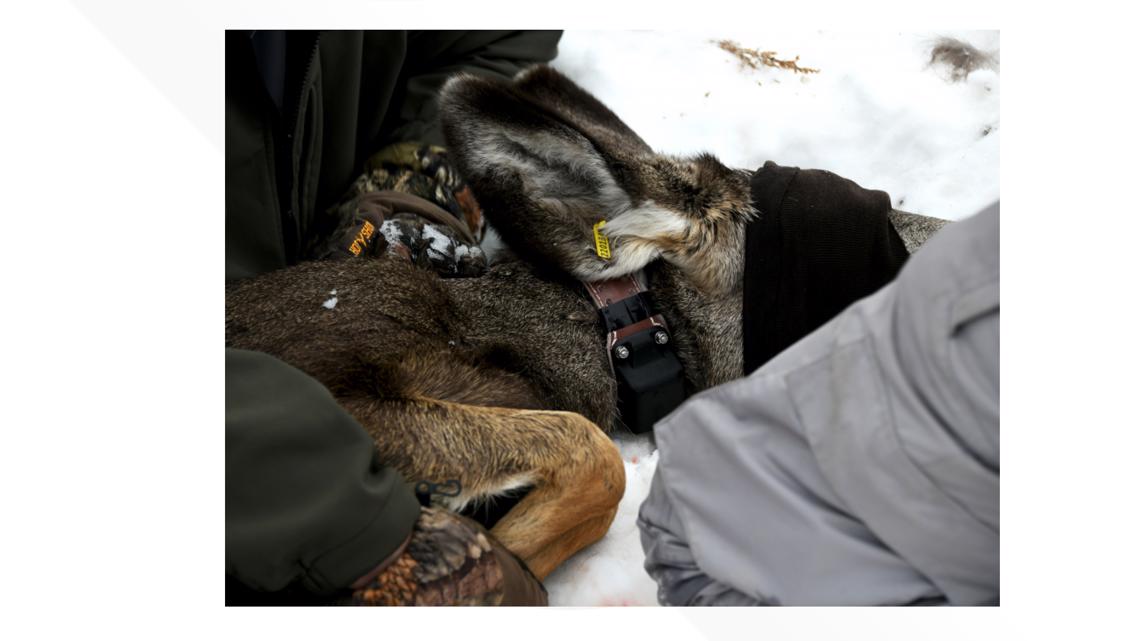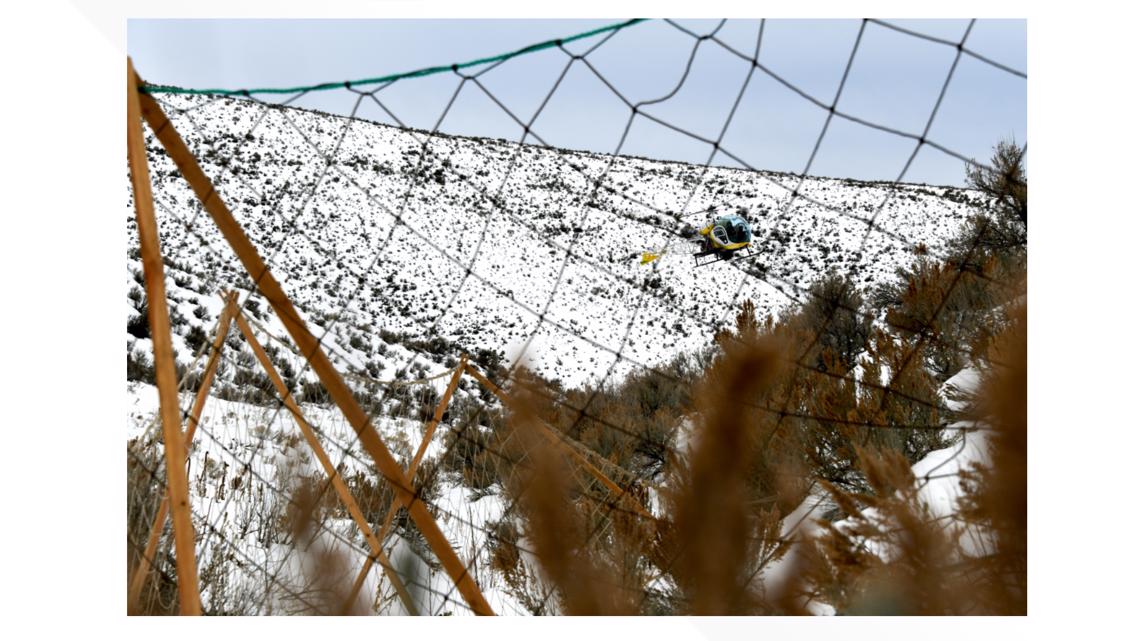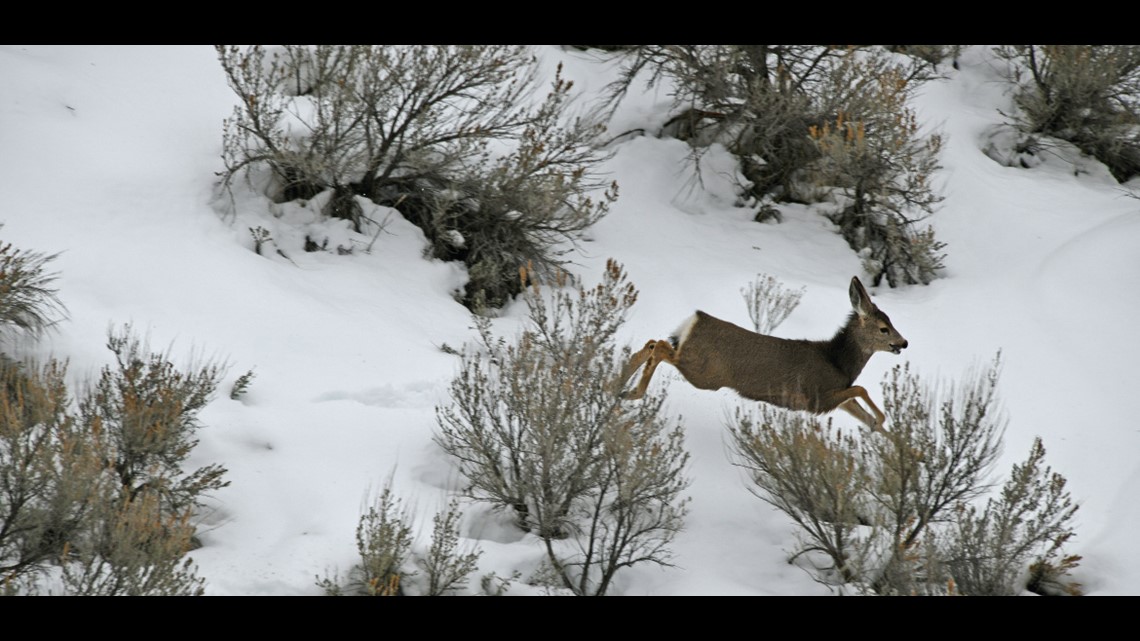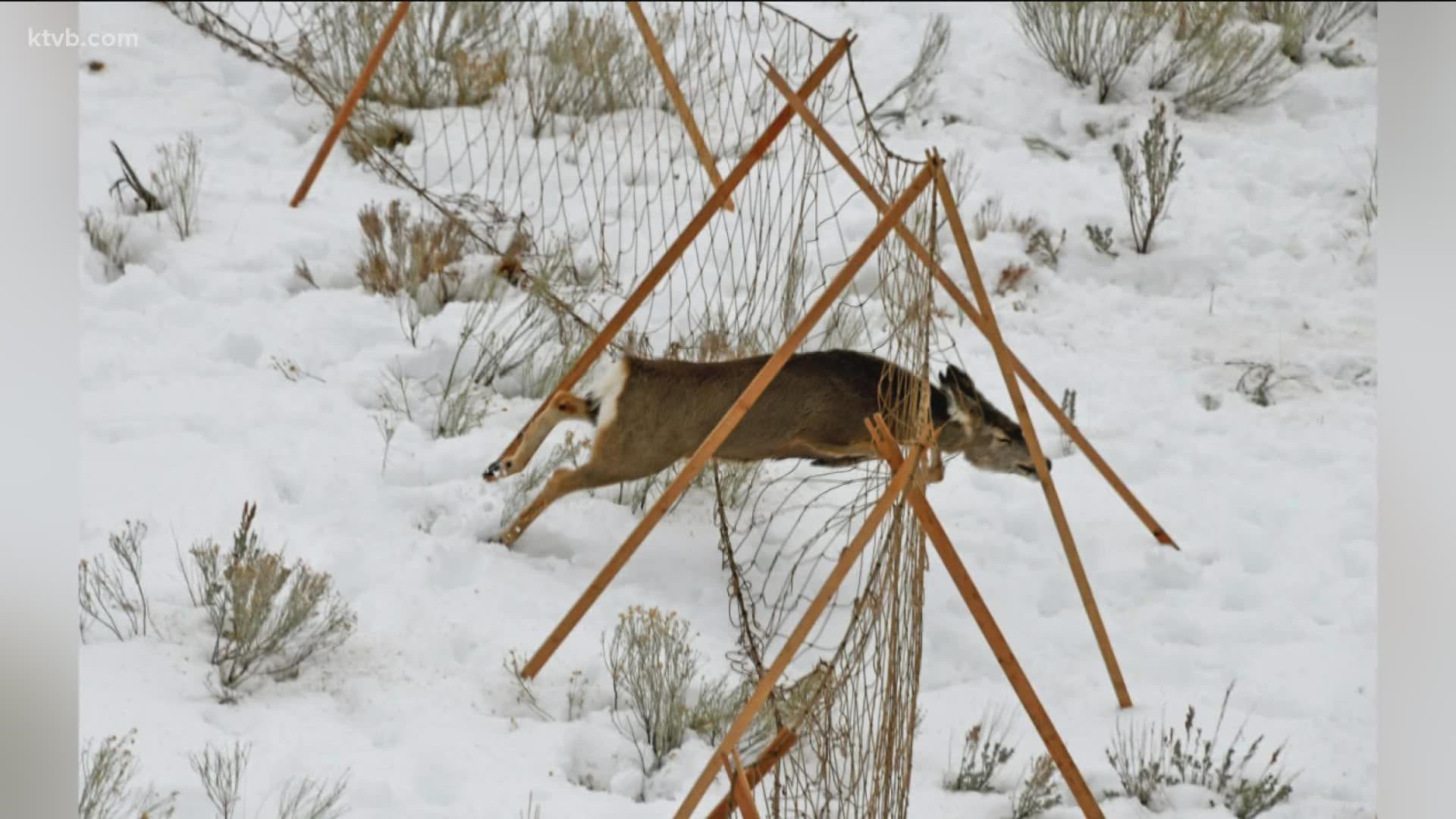JEROME, Idaho — The Idaho Department of Fish and Game is trapping mule deer in the Magic Valley region to place GPS collars on the animals in an effort to monitor survival rates during the winter.
Biologists will then analyze the data supplied by the collars to determine how many animals survived the winter, and to make recommendations about the next hunting season.
The operations involve the use of a helicopter to drive deer into a capture net. Once in the nets, deer are quickly processed by placing a collar around their necks, putting ear tags into both ears and measuring leg length to determine growth and weight changes.




Big game animals typically congregate on lower elevation ranges in the colder months, which is why trapping is usually conducted in winter.
Biologists may also draw blood from does to determine pregnancy, and sometimes will perform ultrasounds on the animal's hindquarters to determine fat thickness, which can be an indicator of overall health.


The data collected in those examinations will help biologists develop some recommendations that will affect hunting decisions.
In years where the populations are low, adjustments are made to reduce the impact hunting will have in the fall. If the winter survival is high, biologists can recommend to the Idaho Fish and Game Commission that they provide more opportunities for hunting to reflect the greater number of animals on the landscape.
Watch more Local News:
See the latest news from around the Treasure Valley and the Gem State in our YouTube playlist:

